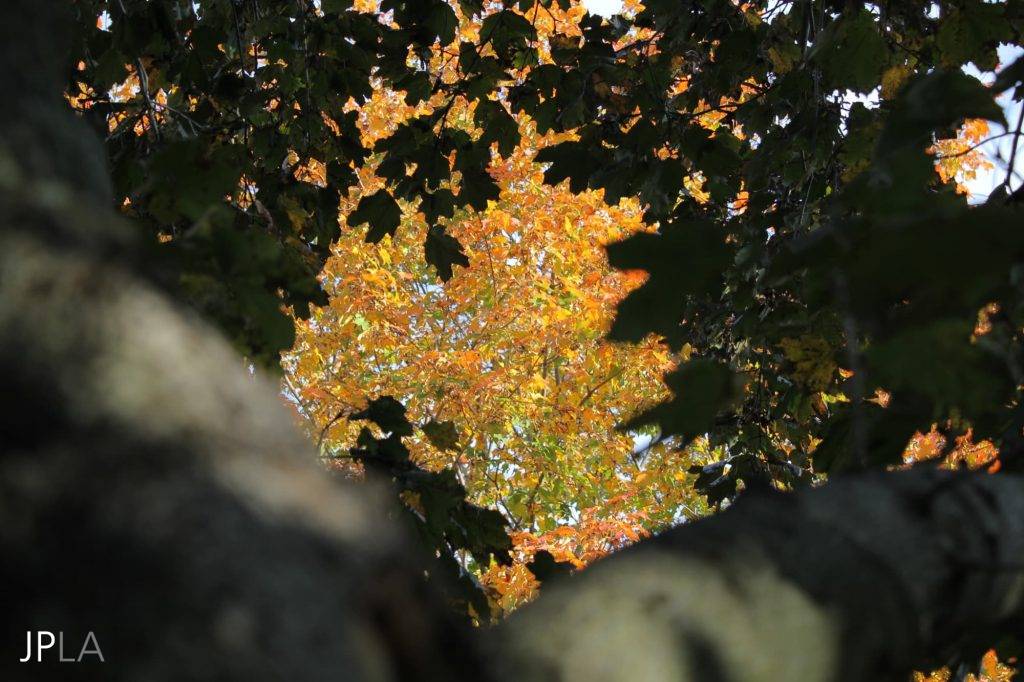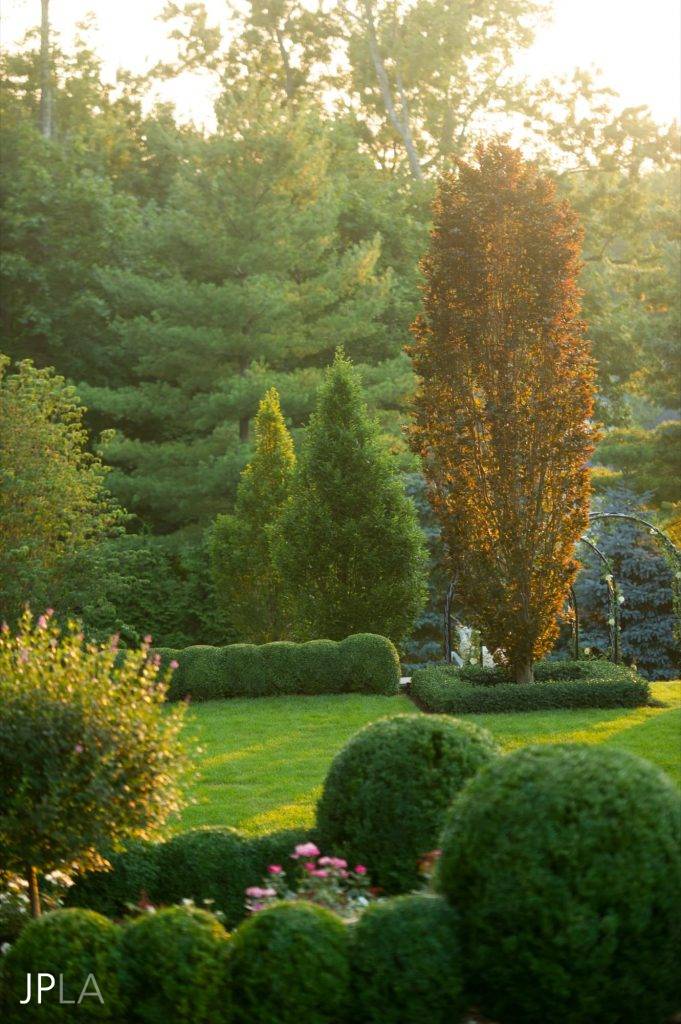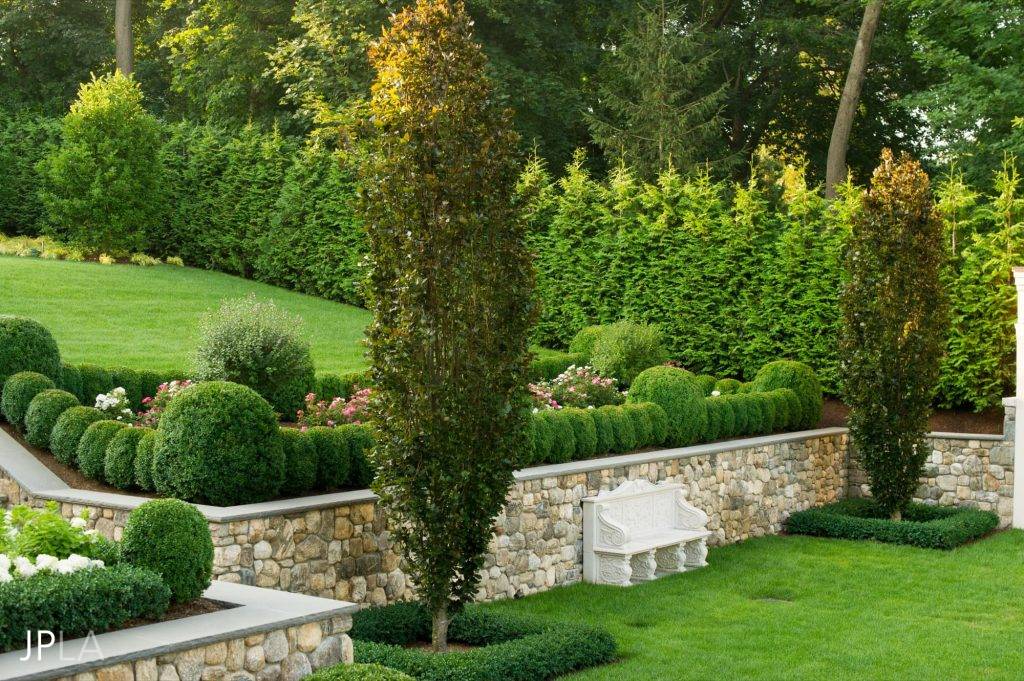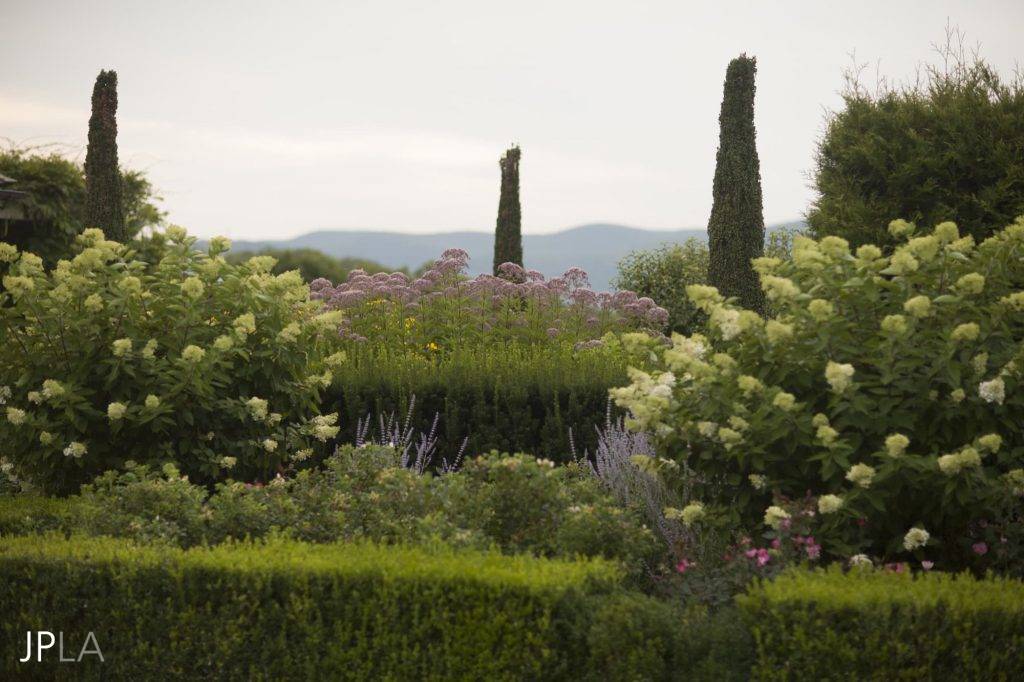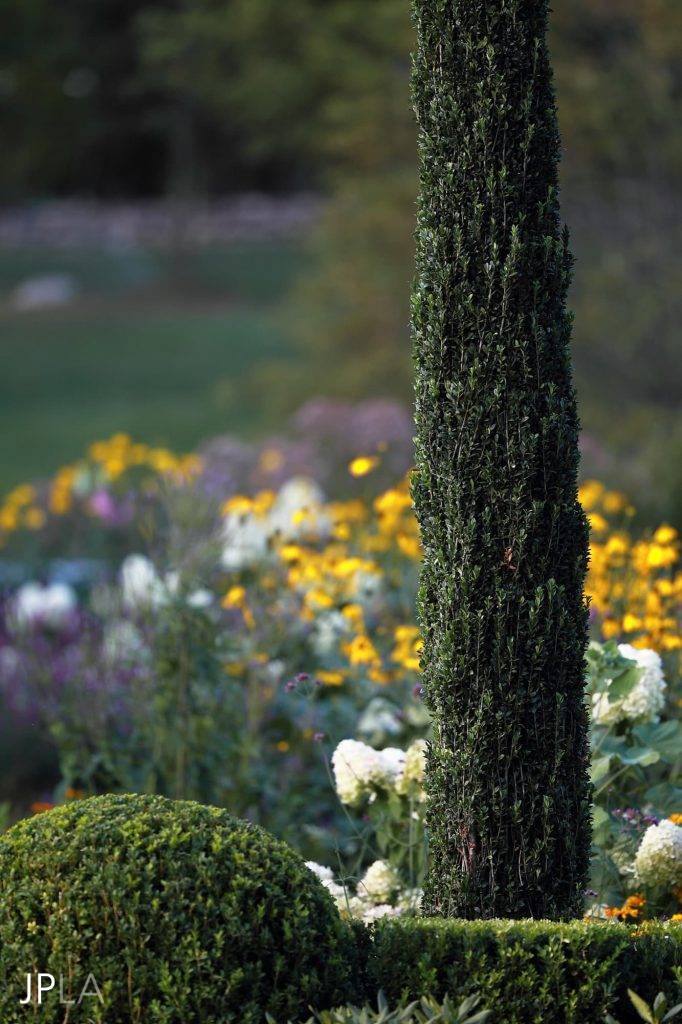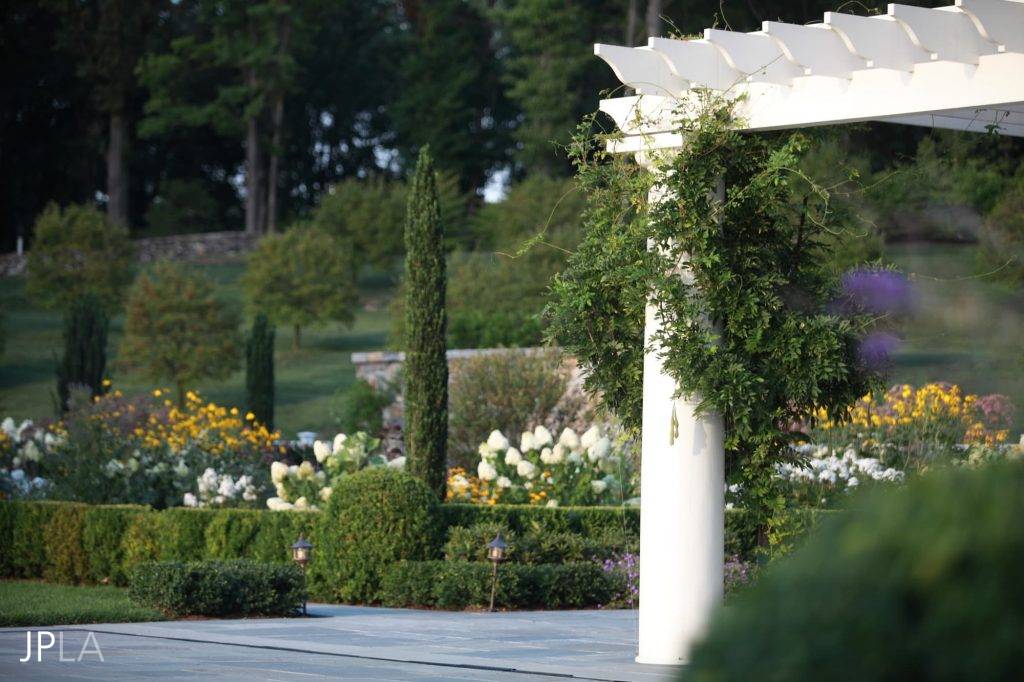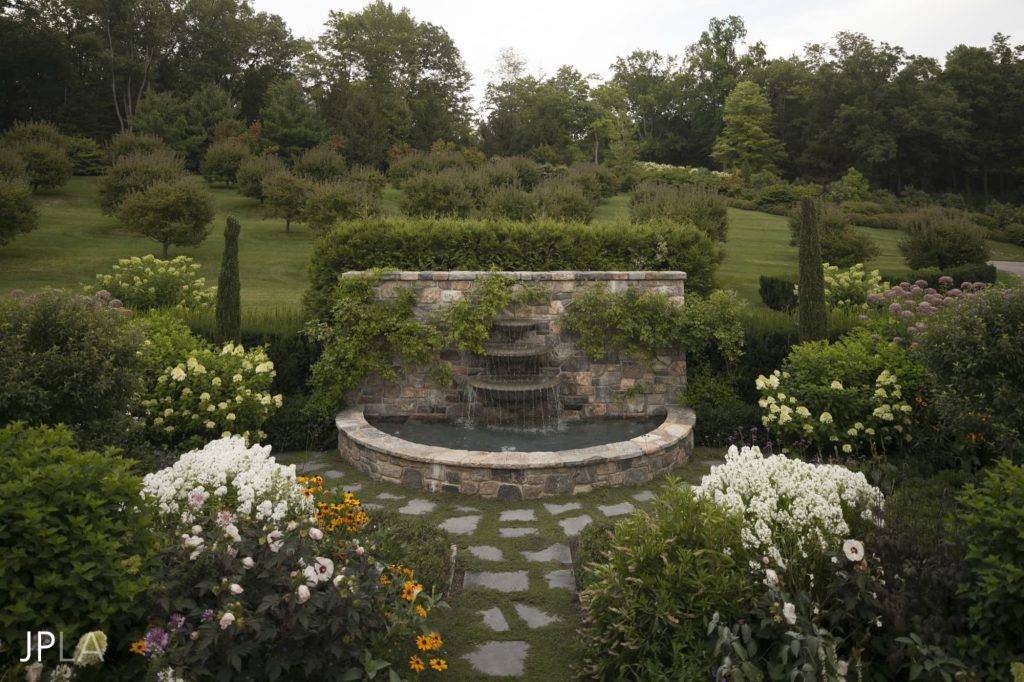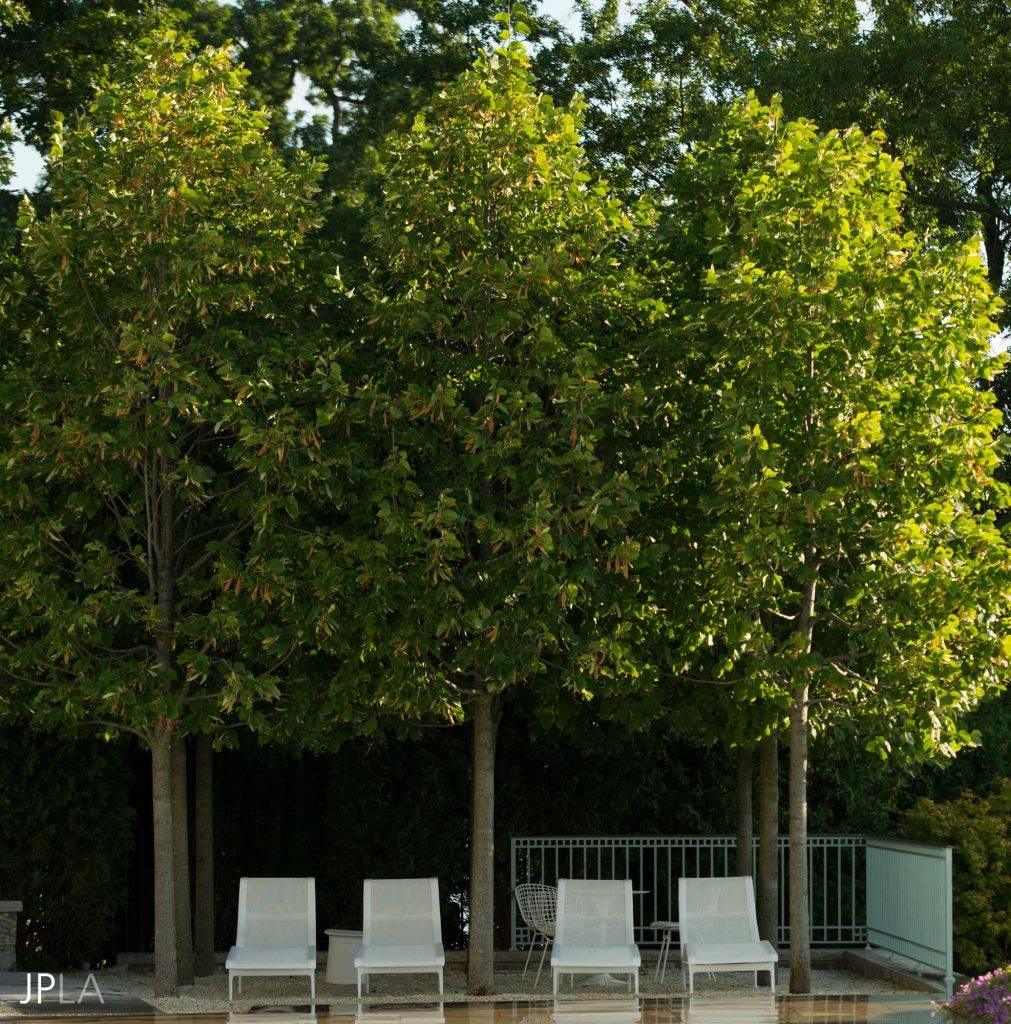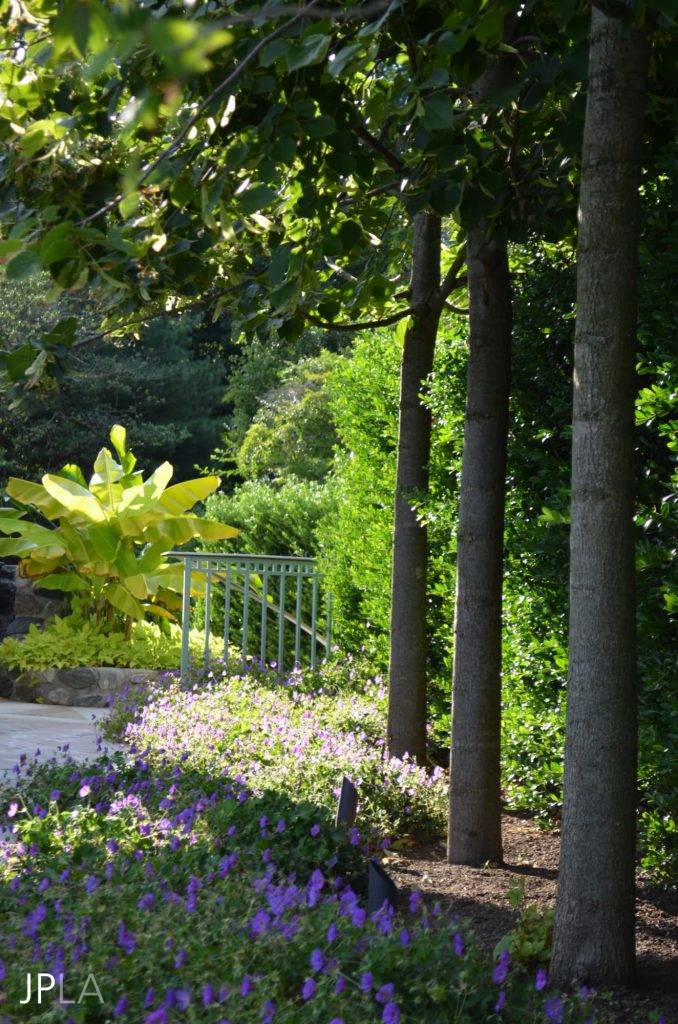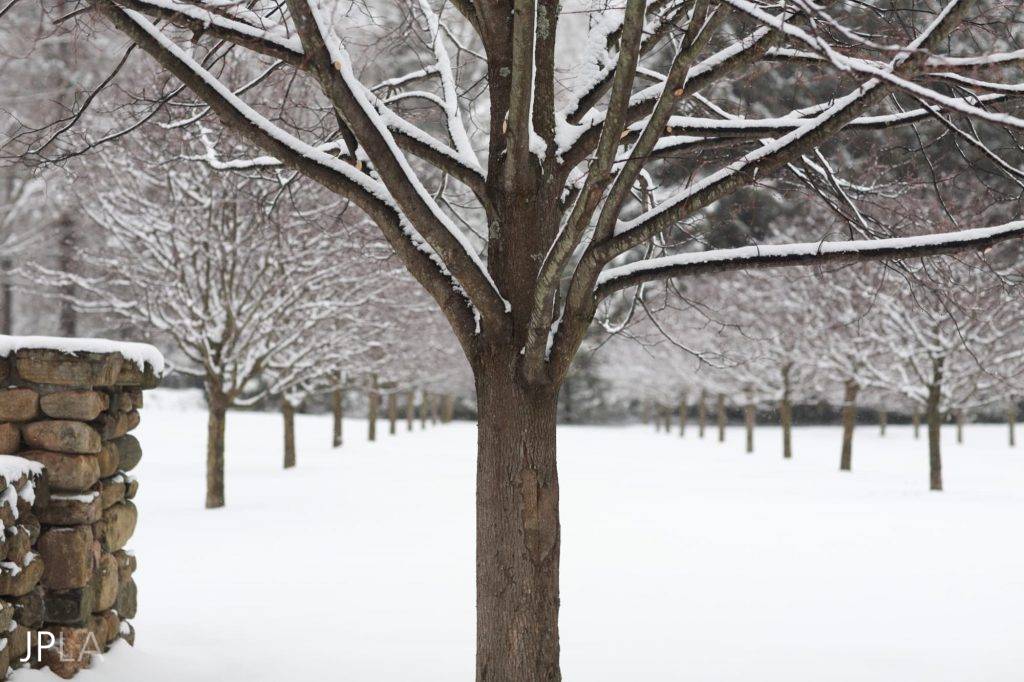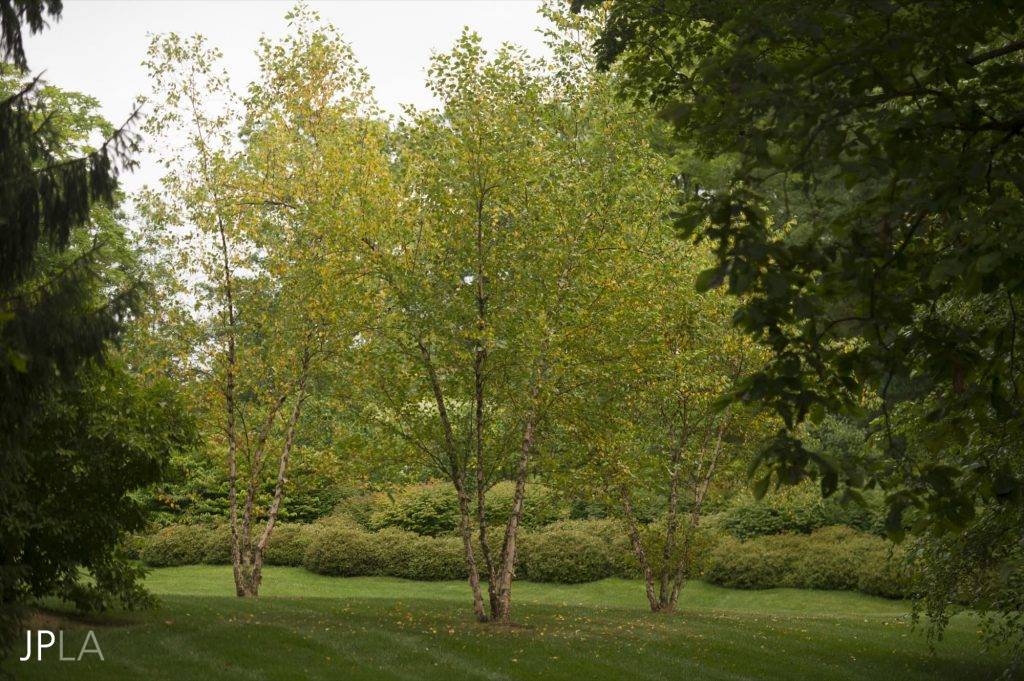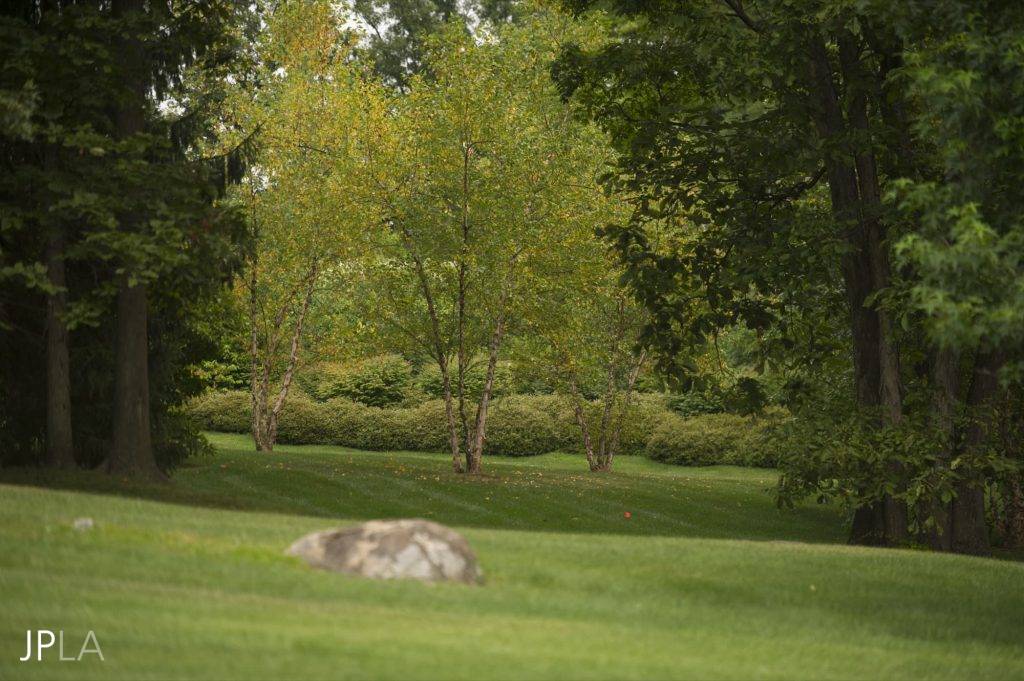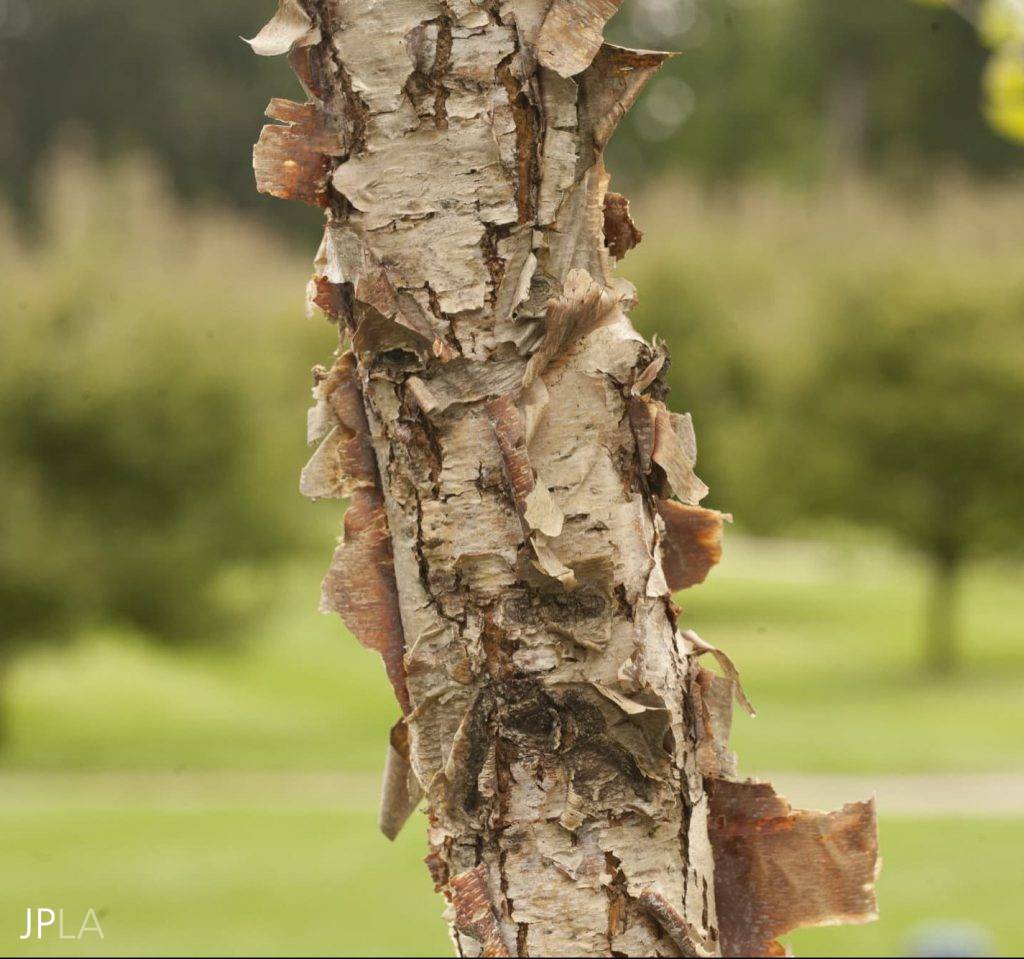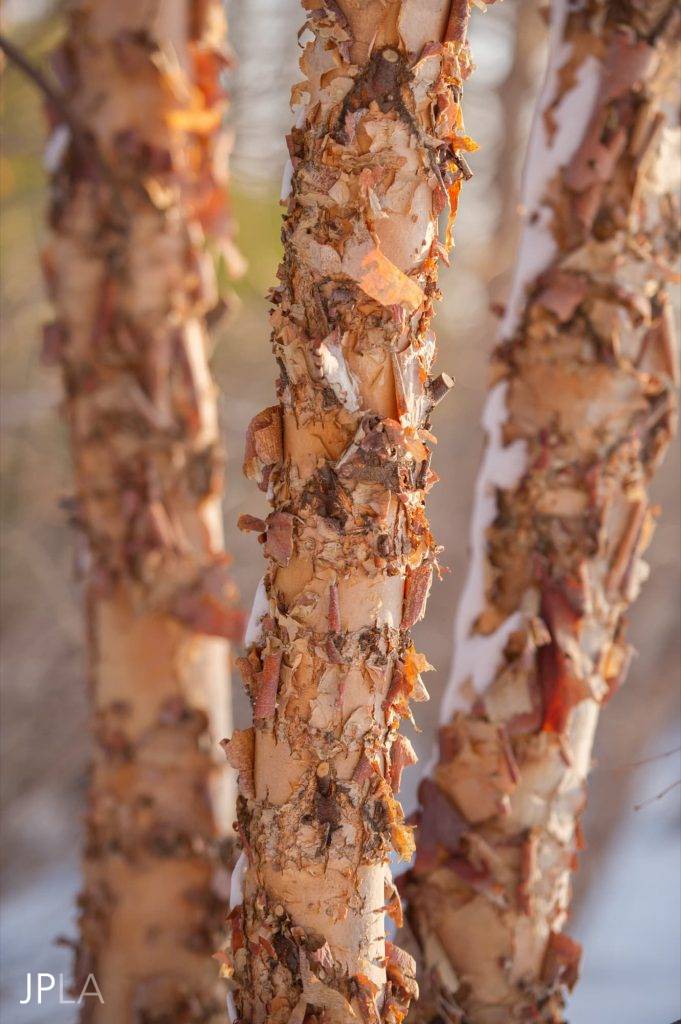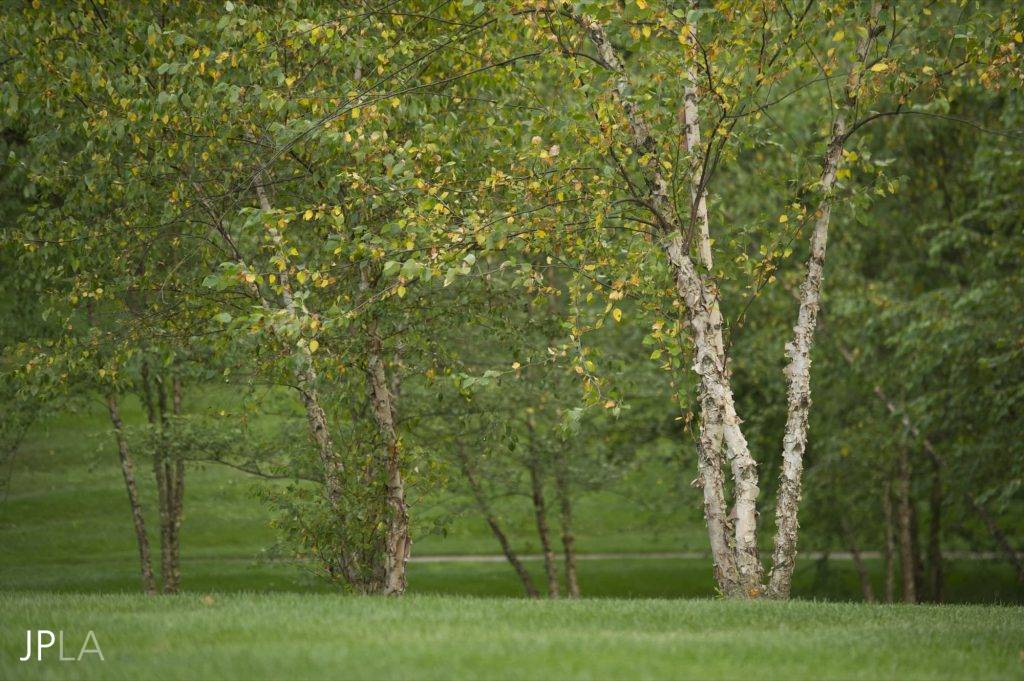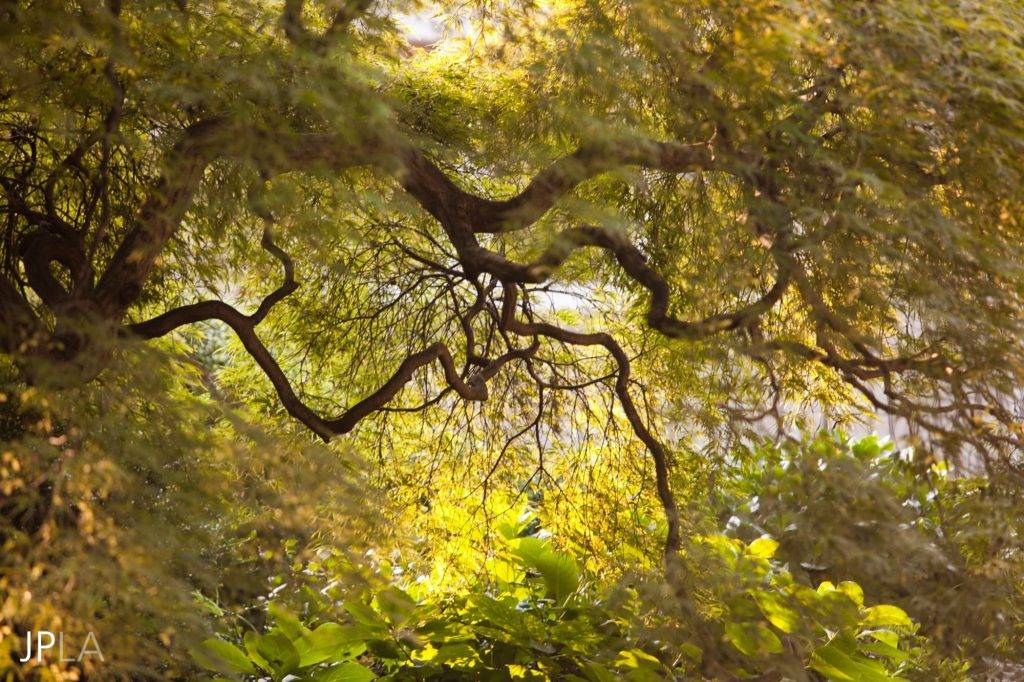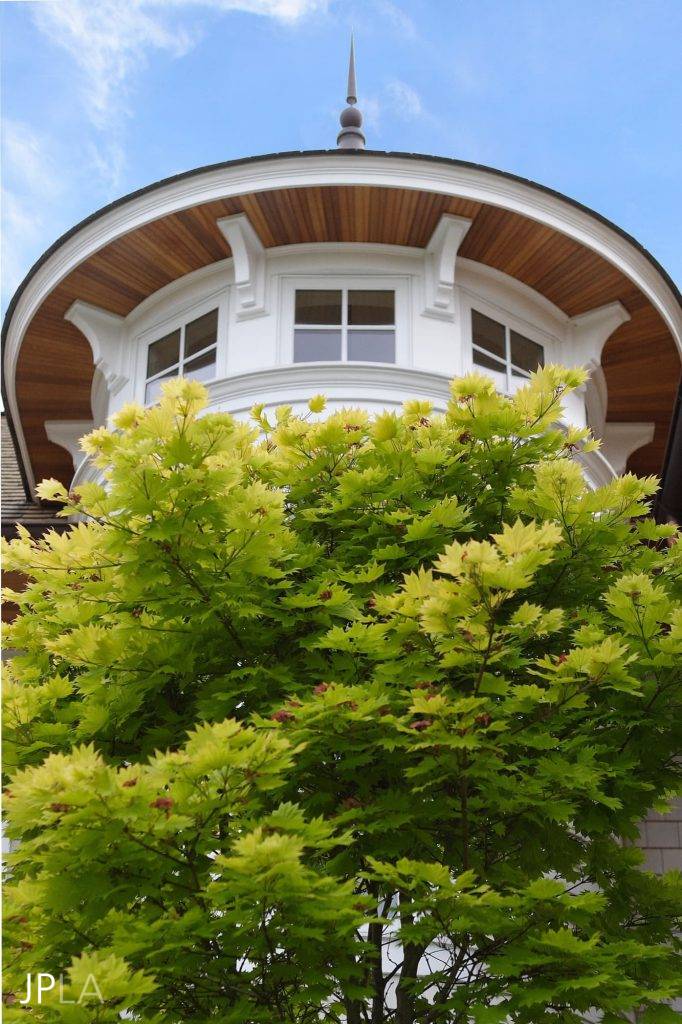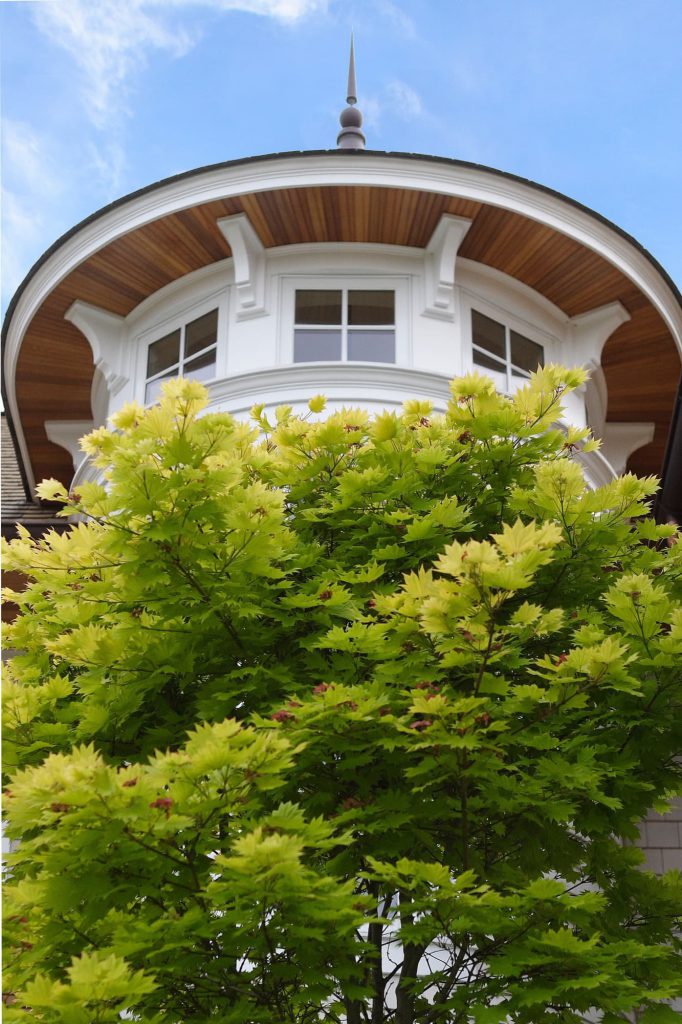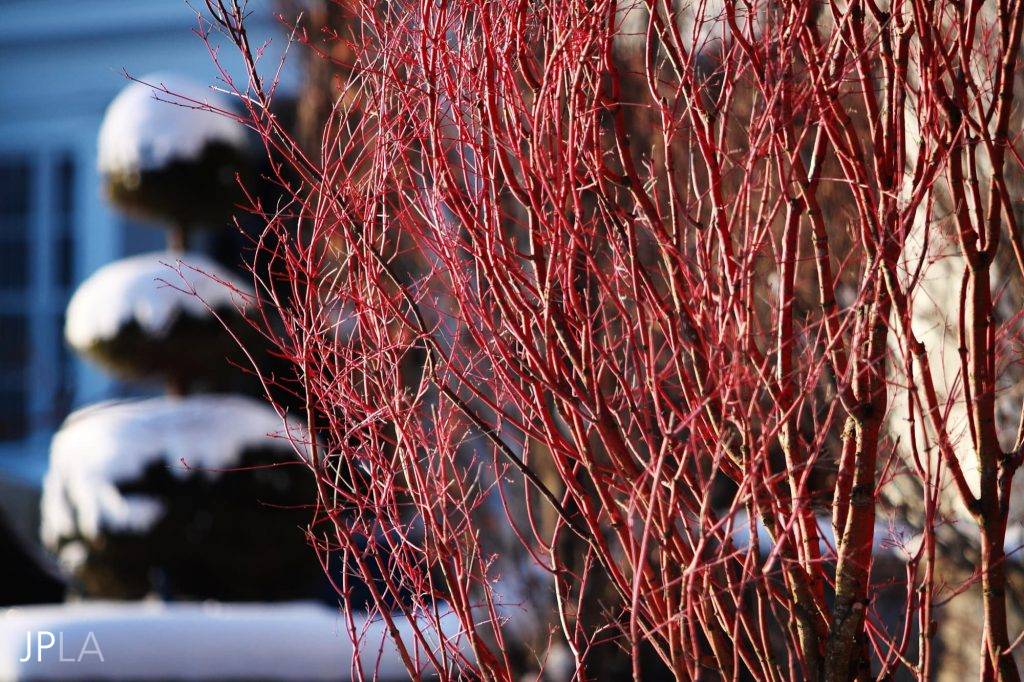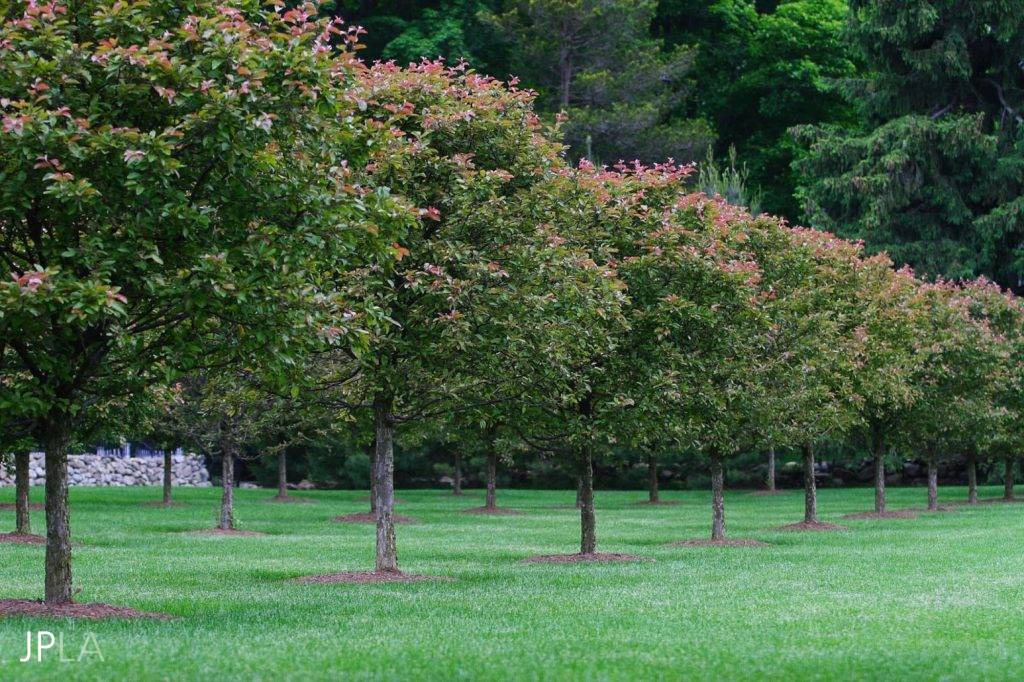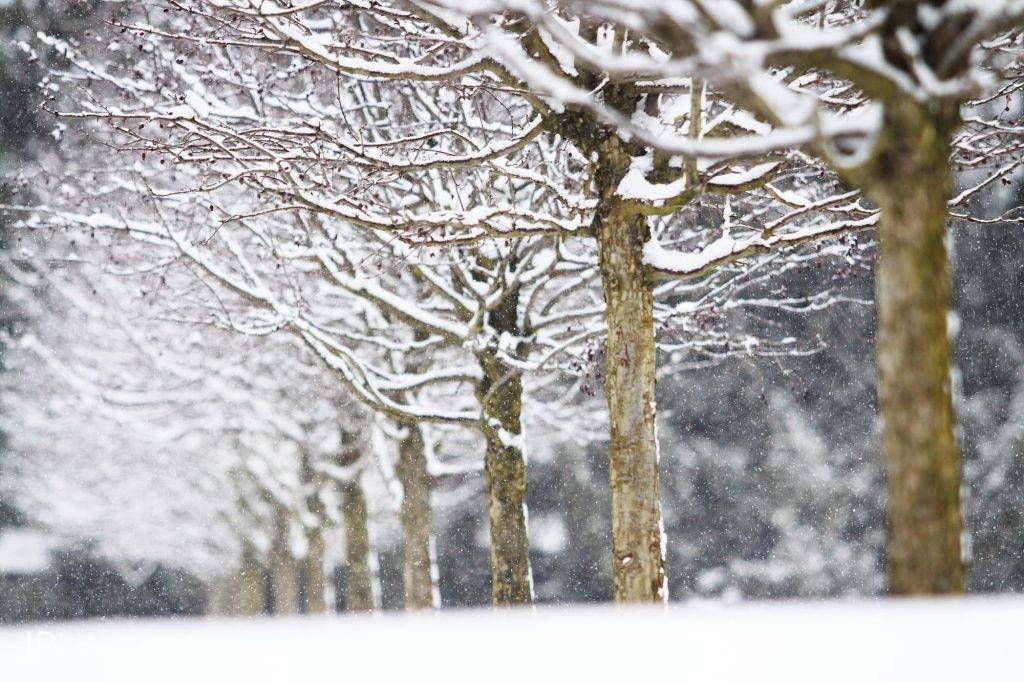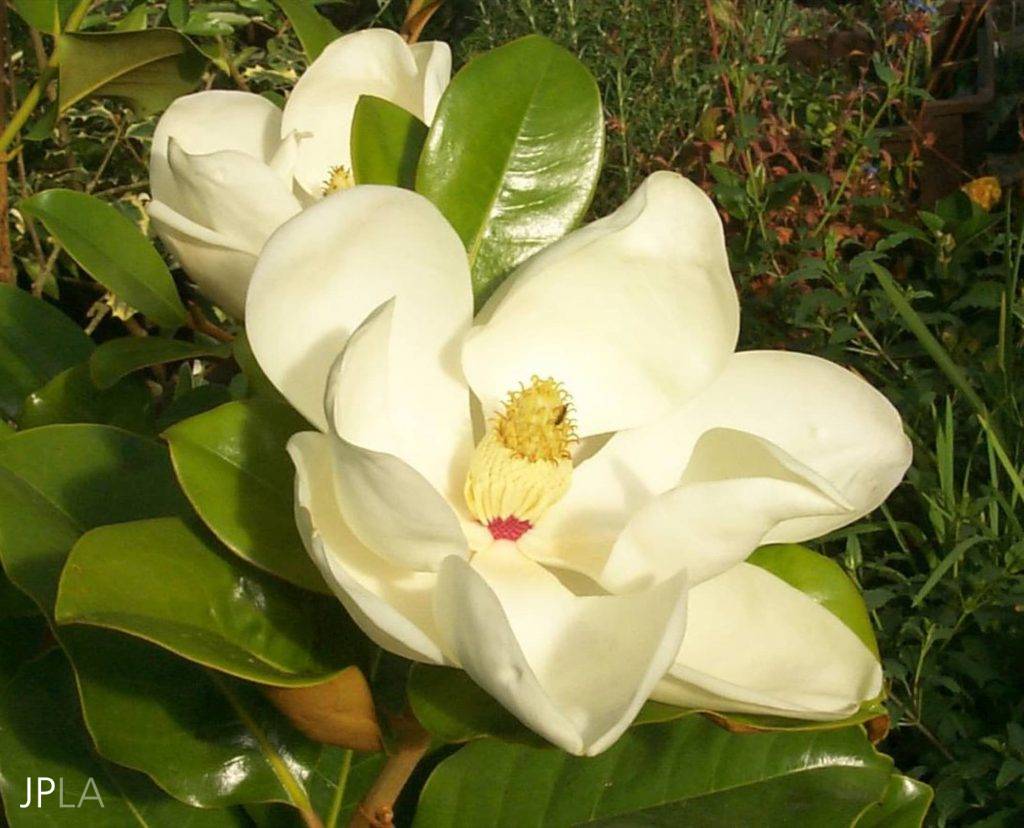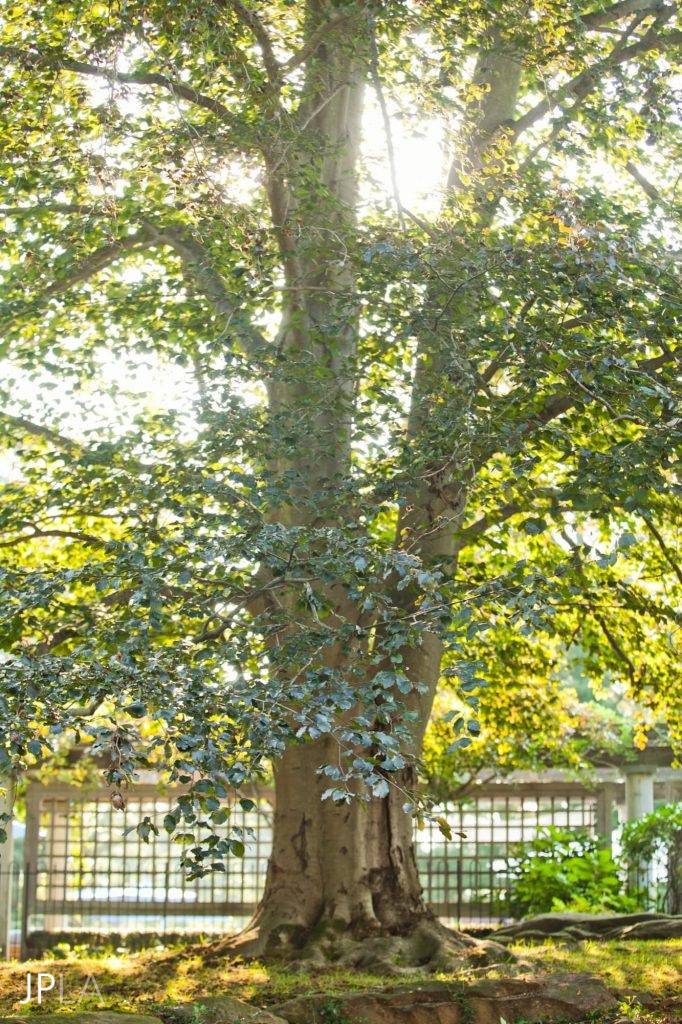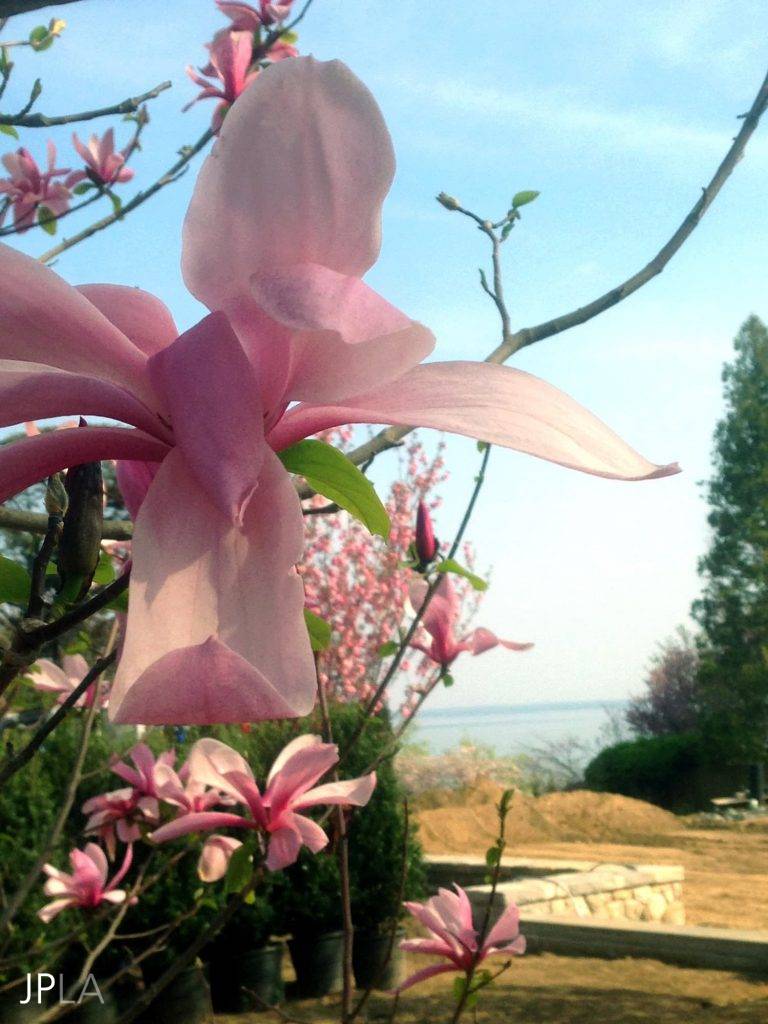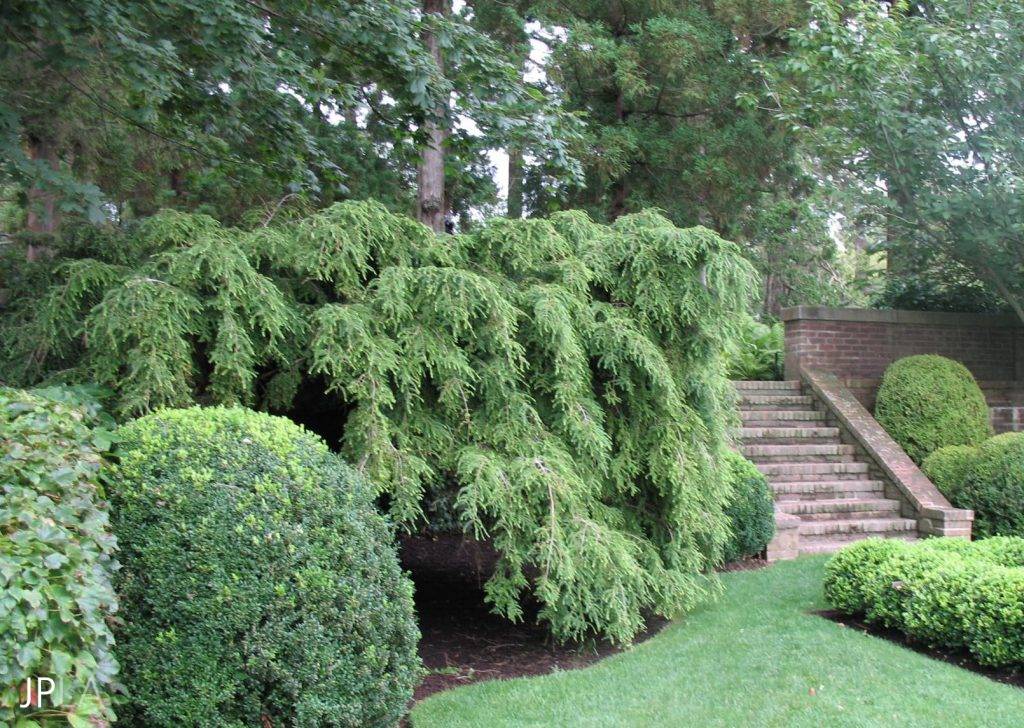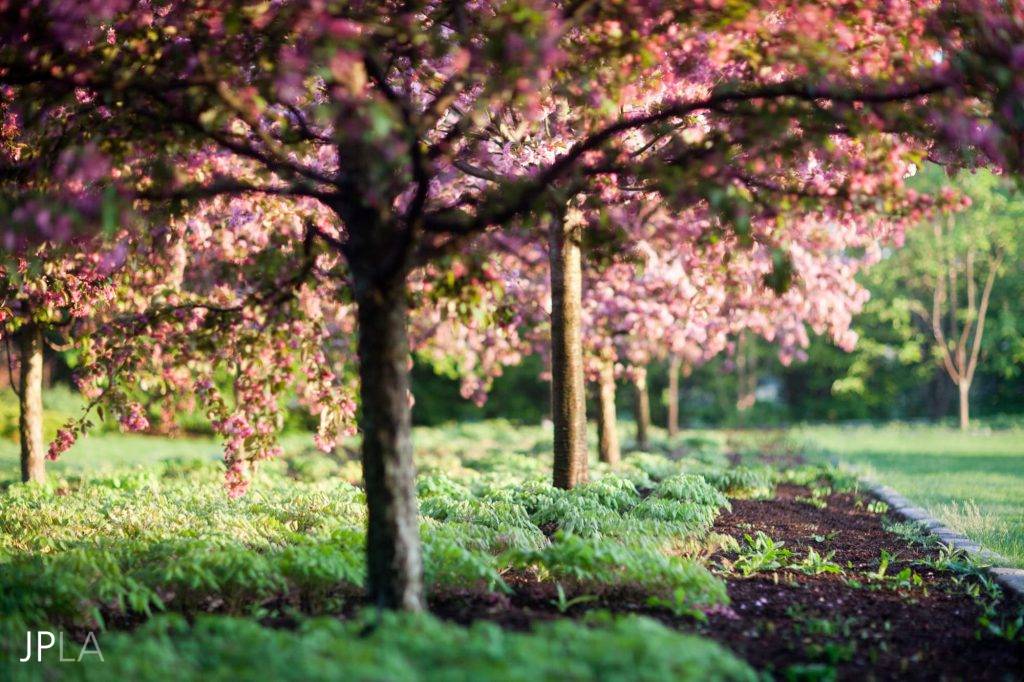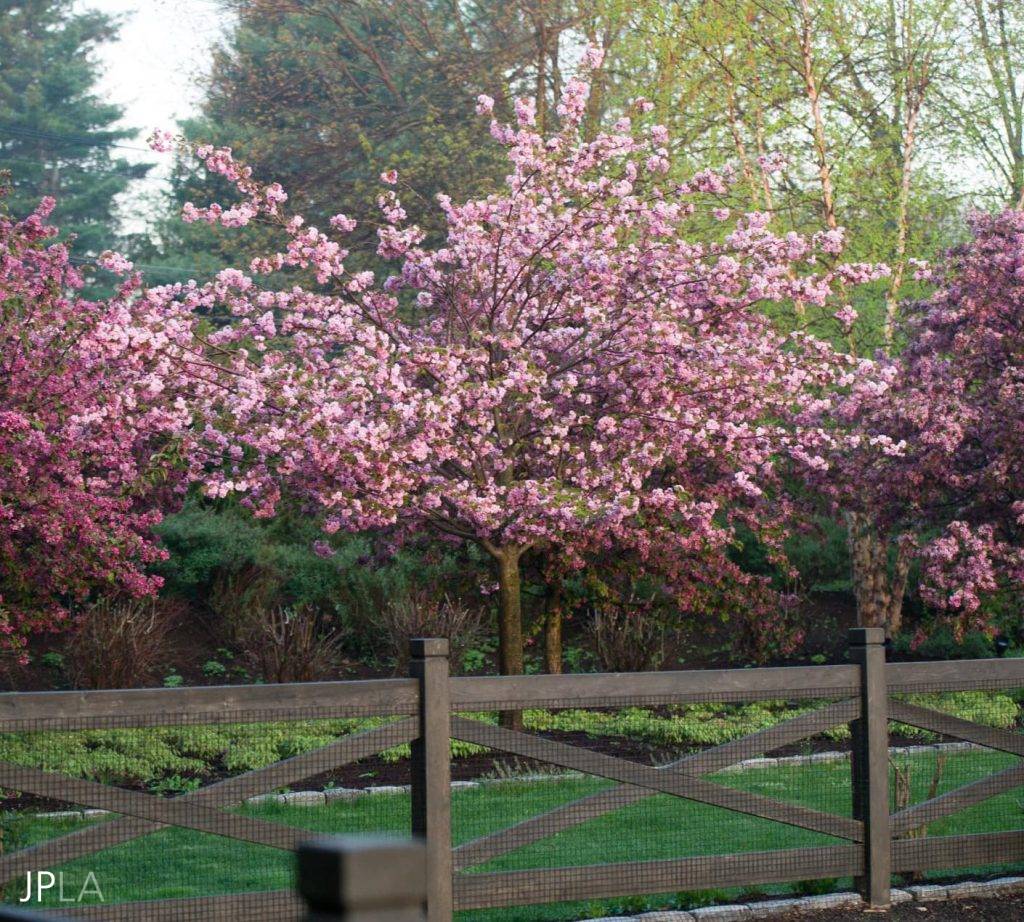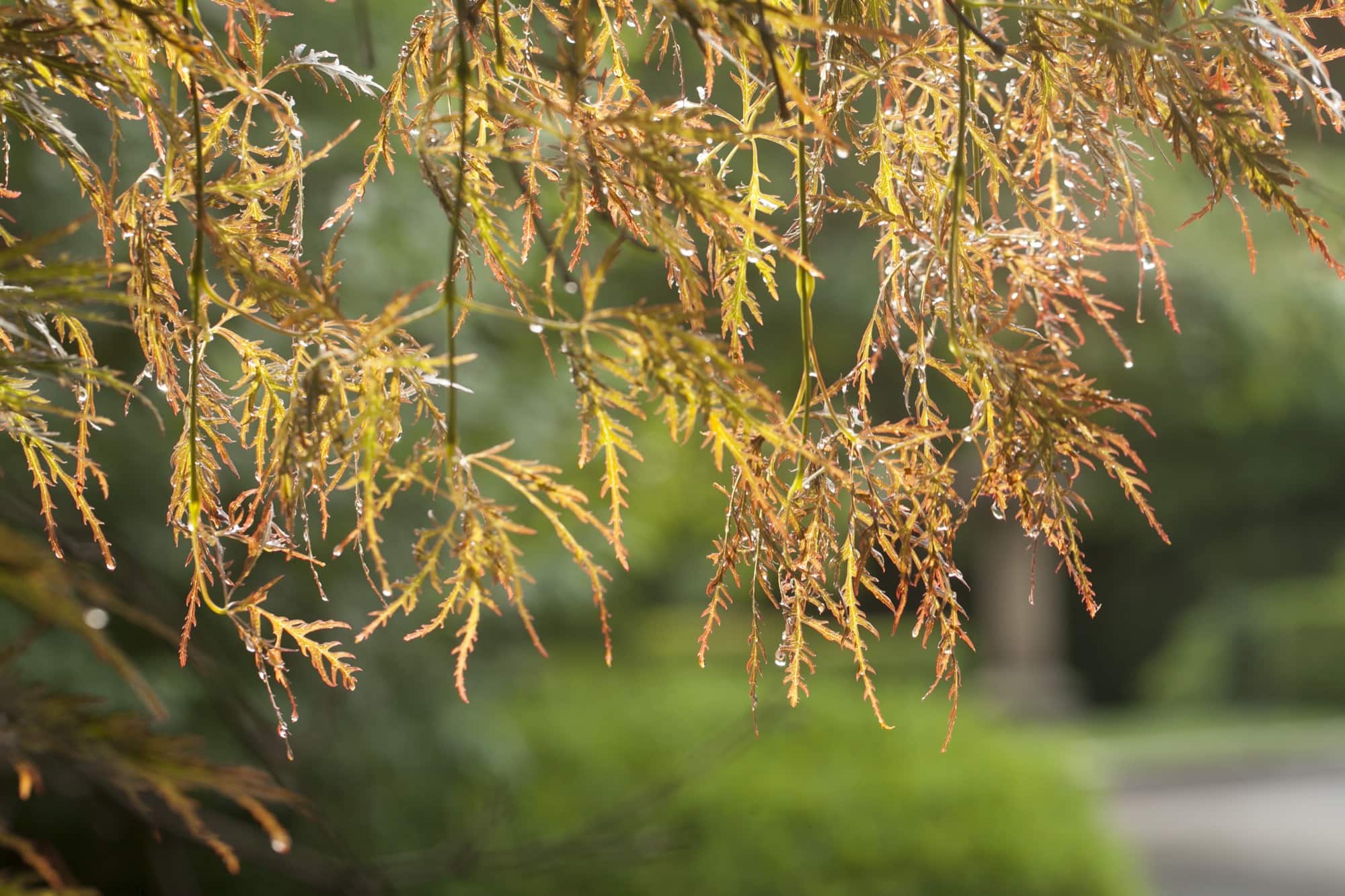
Grace & Timelessness
All styles of landscape design throughout history resonate with me, as long as there is a strong respect for the land and respect for nature. Designing landscapes is nothing new— the Romans were outside soaking in their baths in the second century BC. In India and the Middle East, there have been garden structures found 10000 years older than that. The notion that paradise could be created on earth took root early and is with us still.
The land is accommodating, and will repay designers tenfold all the love and the care that they give it. Nature requires us as a profession to use our intuition and if the designs are thoughtful in this, all styles of historic landscape are environmentally in tune
Trees are a true expression of grace and timelessness. They offer a threshold through which we can enter into the stories of the land and nature. Everything about them is important to notice – the bark, the leaves, the seeds, flowers and fruit. The growth habit and the branching structure are stories in themselves. During my career I have had the opportunity to meet many great and wise nurserymen and growers. Visiting a tree farm and walking the fields with these dedicated horticulturists has been the finest education I have found. Most of these nurserymen are the living example of the line “They have forgotten more than I will ever learn”. Many people have made a lifetime study of trees and I understand why.
In garden and planting design trees are a fundamental element. They create the green architecture and add the “roof lines’ for the planting design. Understanding the height of the tallest existing trees in relationship to the height of the built structures and the new trees you will put in is key to creating the grace of a well-designed landscape. Outstanding trees make the best focal points in a garden and create essential features within the design. Choosing the right trees will determine the strength of the landscape. Understanding the existing trees height and form with give you a reference point to how your lower shrub plantings should relate to the whole picture.
Exceptionally shaped trees are compelling.
Fastigiate Beeches
The most gracious of the trees I love – this tree is stunning in the green leafed form – Fagus sylvatica ‘Fastigiata’ and the red or purple form Fagus sylvatica ‘Dawyck Purple’. Another favorite is Fagus sylvatica ‘Red Obelisk’. These purple leafed beeches are jewels in a landscape. The newly unfurled leaves in the spring glow like rubies in the sky – I always feel like Alice in Wonderland when I stand next to them. The red leaf calms down to a lovely deep eggplant purple for the remainder of the summer season. The winter shows them naked and exposes the most elegant branching structure imaginable. The bark is the icing on the cake – soft gray and skin like. It wrinkles and folds over time and they lend themselves to stroking and moments of deep appreciation. This is some group of trees.
Sky Pencil Hollies
This Japanese Holly – Ilex crenata ‘Sky Pencil’ is naturally upright and fits in tight spots – with height and style. All hollies take well to clipping and pruning, but this one is naturally an exclamation point. Works well against structures and in beds as it will not outgrow its place.
Lindens – Full and Pleached
The Linden tree, left unpruned, will develop a graceful, orderly branching habit that is well balanced and symmetrical. They can be used as structure and accents in the residential landscape and be counted on to maintain their graceful shape and balance with little or no pruning. The bark is sweet smelling and deer are attracted to it in the spring – they will rub their antlers on them and give the trees a good amount of trouble. This can be easily solved by using tree wrap on the trunk of the tree.
Tilia cordata – Tilia tomentosa – What a classic statement these trees make. This is the tree European gardeners call Lime trees. In Belgium, they are very inexpensive and are used as privacy hedging and landscaping workhorses.
They take well to the tight pruning – pleaching – and happily create the line and impact that only a living tree wall can bring. For outlining walkways, adding style and finesse – this is a great tree to plant.
River Birch
Betula nigra “Heritage” — The most agreeable of trees — like Labrador retrievers, this tree is agreeable, eager to please and grows fast and well. As a multi stemmed tree, it offers great opportunity for many areas that a single leader tree does not. A multi stemmed tree grove or allee never risks a forced or formal feeling – there is no chance of a lollipop look from a row or grouping of these sweet trees. The juvenile bark is cinnamon colored and as it matures and peels back it lightens to a creamy tone. The early spring leaves are a delicate shape and chartreuse (love!) and the summer green is fresh and deep. The fall color is a pleasant yellow. The winter interest of the bark and vase like shape is tremendous. They light beautifully in all seasons. There is a lot to love about this tree.
Japanese Maples
What a great family of plants! Japanese maples have everything going for them – shape, bark, leaf shape, and branching shapes – and widths and heights. They are far easier to move and grow than people realize and not much bothers them except being too wet. They are deer resistant as well. Spend some time getting to know these trees – there are literally thousands of varieties. The key to them is this: the leaves have varied and striking spring, summer and fall colorations. They dress up all the time.
A rock star among my favorites is Acer palmatum “Sango-Kaku”- Coral Bark Maple – a small and well behaved tree. Although it can have an unremarkable upright broom like shape and branching habit as a young tree, it will mature into a nicely shaped and balanced rounded form. The leaves and the bark will delight everyone – the bark is green in the spring and then slowly starts to redden up. After the first frost the bark is iridescent crimson – this is a phenomenal look in the dead of winter. The leaves start out in the spring as apricot and turn to chartreuse tinged with red edges – and the fall brings on another color show of orange and red. Splendid.
Moon Maple Acer shirasawanum ‘Autumn Moon’ – what a delight! The chartreuse foliage holds itself in a horizontal manner – it differentiates itself from all the plants near it with this striking unique growth habit. It will always catch your eye and make you think about why it is so special. The leaves put on a show – spring time is a burnt orange with a hint of green and the color becomes more intense as the season goes on. If planted in the shade it will stay a paler yellow but it will grow well in sun or shade.
My love, Acer japonicum Aconitifolium or Dancing Peacock has style and flair. The leaves are thickly dissected and green – and give this maple the overall appearance that a flock of peacocks are dancing on the limbs. A splendid performer in the fall as leaves display brilliant scarlet tones with oranges and gives the appearance of flames. Add this to the attractive crimson colored seeds and you have quite the tree.
Sargent Crabapple
Malus Sargentii–Sargent crabapple — is a dwarf old fashioned crabapple with a dense, wide-spreading, irregularly-rounded shape that wants to be six to eight feet high by 8 to 10 feet wide. This is what I call a grandmother tree. It is what it is – and has the down to earth individual shape that reminds me of an old farm tree – it will give the garden a “it’s been here forever” look. Small, very fragrant, spring blossoms start out as red or pink buds but open to glistening white flowers. Dark red, persistent fruits then follow and these attract birds and other wildlife. This is not a neat organized tree, but it is a special feature for the right garden.
Magnolias
I have a love-hate relationship with magnolias. To me, they are a true aristocrat of a tree, beautiful in bark, form, spectacular in flower and have beautiful lusciously large leaves. A wonderful garden ornamental. They can be hard to transplant and rather moody about being moved, often for years. They will hold a grudge for a while, and the more food and water you give them, the more reluctant they are to behave well. They will grow out of a crack in the sidewalk, so be careful not to baby them. Once they decide they are happy, they will be loyal and generous performers. I look for varieties that flower later in the spring to avoid frost damage of the buds (you can lose the flower show). They evoke Georgia O’Keeffe dreaminess when they flower and the many varieties offer quirky distinctive features.
“Galaxy” Magnolia (liliflora ‘Nigra’ x sprengeri ‘Diva’) ‘Galaxy’ – the name says it all – it’s a Diva with a capital D. It is a late flowerer, and the color of the long lasting blossoms is a rich deep dark red purple. It is available as a single stem or a multistem tree.
Southern Magnolia – Magnolia “Grandiflora” – This is a valuable tree for many reasons. The green stiff leaves have the brown velvet undersides, and this makes them not only gorgeous on the tree but wonderful for cutting and using in arrangements and displays. The flowers are very large – up to 12” across and have six to fifteen waxy white petals. They are lemon scented and beyond the pale they have a slightly bizarre rose to magenta colored fruit that is cone-like. As they mature in early fall they open to release single rosy red seeds suspended on soft thread like stems. This is an entertaining and tree that will support the garden in all seasons.
Weeping Hemlock
The Weeping Canadian Hemlock – Tsuga canadensis ‘Sargentii’ is my favorite evergreen specimen tree. This tree was a centerpiece of my first garden design and continues to be a favorite tree. I have used them as foundation plants, low growing and rowed across the front and the sides of a Georgian brick house – it was very effective. One caveat – deer love them and therefore they need protection. One upside of the fact that they are not deer resistant is that the nurseries have reduced the cost of them and have many large ones available. It is a lovely, friendly tree and with its rounded weeping form it is easy to anthropomorphize. It becomes an elephant or better yet, Mr. Snuffleupagus. It has soft green needles attached to gently weeping branches reaching to the ground. These specimen trees look their best with lower branches left on and touching the ground. Unlike deciduous weeping trees that lose their leaves, this tree stays a densely rounded shape in all seasons, a great value to the garden.
Kwanzan Cerry
Japanese Cherry Trees – Prunus serrulata – I know there is a great deal of elitist dislike for this tree – the bubble gum pink of the flowers and the fact it is found is so many yards used badly is so many ways. Over time, I have fallen hard for this tree. It is so glorious in flower and the blossoms float in the air and in bodies of water, carpet the ground and create moments of heaven. I often lay down in the blossoms. Where would anyone be without Cherry Tree Festivals? This is the special tree that makes people aware of trees and start to notice them. The open vase like shape and the striped gray brown bark is lovely. These trees are not as long lived as we would like, and are prone to canker and disease. But who cares? They are bold, flashy and intense. Just what the doctor ordered.
